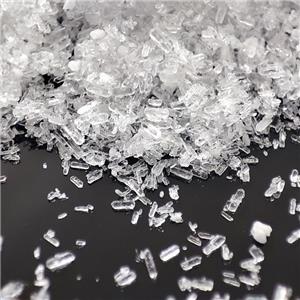Parçacık boyutu dağılımı ne anlama geliyor? D10, D50 ve D90 ne anlama geliyor?
Particle size, or grain size, refers to the size of the particles, and is often referred to as particle size or diameter. When a physical property or behavior of the measured particle is closest to a homogeneous sphere (or combination) of a certain diameter, the diameter (or combination) of the sphere is taken as the equivalent particle size (or particle size distribution) of the particle. For non-spherical particles, their particle size is related to the measurement standard and statistical method, so the particle size is usually "equivalent".
The proportion of particles in different particle size ranges is called frequency particle size distribution (or cumulative particle size distribution). The ordinate of the particle size distribution graph usually represents the measurement of the particles, which can be the percentage of the number of particles, length, area or volume, and the abscissa represents the particle size value calculated under different benchmarks. D10, D50, and D90 are usually used to reflect the uniformity of the powder. These three parameters are also called the cumulative distribution of the powder.

D50: Also known as the median particle size, it refers to the particle size value corresponding to the cumulative distribution percentage reaching 50%. This value divides the particle size distribution into two, meaning that 50% of the particles have a particle size larger than this value, and the other 50% have a particle size smaller than this value. If the D50 of a sample is 5μm, it means that in the sample, 50% of the particles have a particle size larger than 5μm, and 50% of the particles have a particle size smaller than 5μm. D50 is often used as an indicator of the average particle size of a powder.
D90: refers to the particle size value corresponding to 90% of the cumulative distribution percentage. That is, in this powder, particles with a particle size smaller than D90 account for 90% of the total number of particles. D90 is often used to characterize the coarse end particle size of powders and is an important reference indicator in powder production and application. Similarly, some industries may also use values such as D95 and D97, which have similar physical meanings to D90.
D10: refers to the particle size value corresponding to 10% of the cumulative distribution percentage, which is opposite to D90. That is, D10 means that at this particle size, the cumulative number of particles accounts for 10% of the total. In industrial production and daily applications, these three parameters are of great significance to particle distribution. For example, in the pharmaceutical industry, by understanding the particle size distribution of drugs, its efficacy and side effects can be inferred; in the field of environmental protection, particle size distribution is one of the important indicators for air and water quality monitoring.
Özetle, D10, D50 ve D90, parçacık boyutu dağılımını tanımlayan ve farklı aralıklardaki parçacık dağılımını temsil eden üç temel parametredir. Küçük parçacıkların boyutu ve dağılımı, endüstriyel süreçler, ürün kalitesi, enerji tüketimi ve üretim güvenliği üzerinde derin bir etkiye sahiptir.




